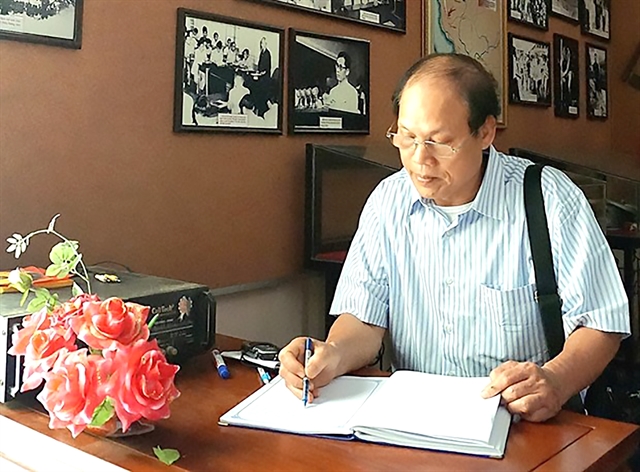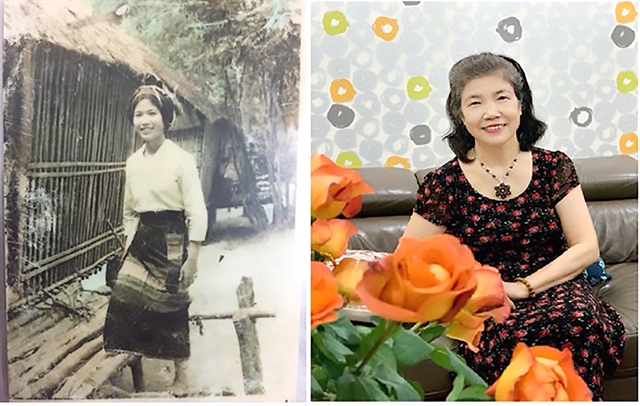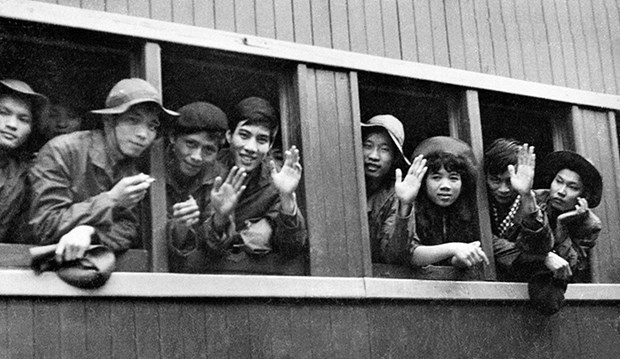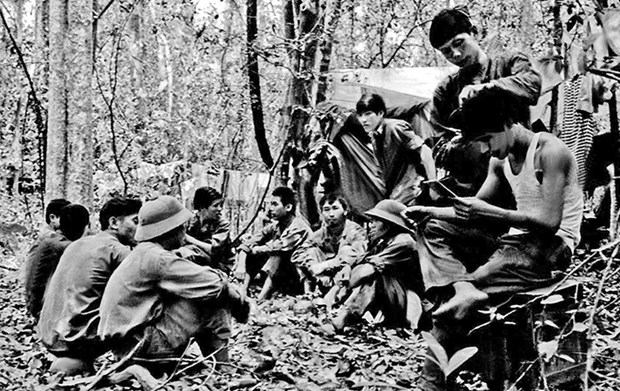 Society
Society

 |
| Nguyễn Sỹ Thủy, a former journalist of Vietnam News Agency. — Photo courtesy of Nguyễn Sỹ Thủy, |
HÀ NỘI — Former journalist of the Vietnam News Agency Nguyễn Sỹ Thủy reminisces fondly about March 16, 1973.
It was a time of hardship and struggle but also of great pride as he and 149 other journalists and technicians of the agency boarded a train to support the Liberation News Agency, the southern counterpart of the Vietnam News Agency.
Their mission: to report on the southern battlefield during the anti-American resistance war.
In his recollections, Thủy speaks of the youthful vigour that animated the group of twenty-somethings as they set out with the spirit of "Splitting Trường Sơn Mountain to save the country/And our heart believes in a great victory."
At the time, Thủy was a final year student of the Biology Faculty at the Việt Nam National University, Hà Nội. He was among 150 students from the country's leading universities selected to participate in an one-year professional training programme provided by the Vietnam News Agency before being deployed to the southern region to report from the battlefield.
Today, Thủy looks back on that time with a mixture of nostalgia and pride. He remembers the sacrifices made by himself and his colleagues and the bravery they displayed in the face of danger.
Though the memories may be bittersweet, they serve as a testament to the enduring spirit of the Vietnamese people in their quest for independence and freedom.
In the face of the bombing campaigns carried out by the United States Boeing B-52 Stratofortresses, which claimed the lives of many civilians in Hà Nội, Nguyễn Sỹ Thủy felt a renewed sense of urgency to complete his professional training and join the fight in the south.
"We all told ourselves that the whole nation is putting all the efforts it has into the resistance war, so, each person must make doubled or tripled efforts to gain the victory," he said.
For Thủy and his colleagues, there was no question that they had a role to play in the war effort.
"There was no reason for young people like us to stay out of the war," he declared.
Despite his marriage, Thủy wasted no time enrolling in the professional training programme – he started just three days after his wedding.
The ceremony was a modest affair, with only a single betel and areca plate, some flowers from his garden, and a wedding backdrop bearing the words "Happy wedding but not forget the mission."
Unforgettable memories
 |
| Cao Tân Hòa, a former female journalist of Vietnam News Agency, on the battlefield in 1973 and now. — Photo courtesy of Cao Tân Hòa |
Cao Tân Hòa, another former journalist of the Vietnam News Agency, shares similar memories to Nguyễn Sỹ Thủy.
She recalls gruelling days of marching under the blazing sun in the eastern part of Trường Sơn Mountain and the heavy rains in the west.
She also remembers the constant battles against scabies, malaria, sickness, and hunger pangs.
Despite the hardships, Hòa and her colleagues persevered and overcame all obstacles with unwavering dedication and commitment.
"We worked with all our heart and sincerity," she said.
Survival was as important as reporting the news.
They not only had to learn how to report on the severe battlefield but also how to stay alive.
At the time, rice and salt were rare commodities, and the journalists had to rely on corn, potatoes, cassava, and wild vegetables to sustain themselves.
Finding plants with oils was crucial to starting a fire to cook their meals.
Cao Tân Hòa's experiences as a journalist during the anti-American resistance war were fraught with danger and hardship.
Once, she and a colleague were stranded by a flood in the Trà Nô River and almost starved to death.
They had to resort to eating wild bananas, but the bitter taste made them vomit repeatedly. They were eventually rescued by a colleague who brought them food as they fainted from hunger.
On another occasion, Hòa lost her way in the forest.
As darkness fell, she became frightened and disoriented. Seeing a light in the distance, she followed it, hoping to find her way back.
Suddenly, her colleague Thành Vinh appeared and grabbed her backpack, pulling her away from danger. Hòa followed Vinh as he led her to safety, but her sandal strap broke in the process.
When they finally stopped, Vinh explained that she was only a few steps away from entering the enemy's territory.
Contributing to history
 |
| 150 journalists and technicians of the agency on board a train to support the Liberation News Agency – the southern counterpart of Vietnam News Agency – in reporting from the southern battlefield during the anti-American resistance war on March 16, 1973. —VNA/VNS File Photo |
Hoàng Văn Tùng, a technician with the Vietnam News Agency, was selected to work at the Technical Department under Minh Ngữ Radio in March 16, 1973.
Supported by the Military Region V, the radio received news from correspondents on the southern battlefield, which was then broadcasted to the entire population via the Voice of Việt Nam.
Initially, reporters sent news via Morse code, but later the radio began using a teletype machine powered by a generator to transmit both information and images via radio waves.
This method made it easier for the enemy to detect and bomb the radio base, which meant the radio had to move locations frequently. Technicians had to carry heavy machines, along with personal belongings and necessities.
To supplement their food supply, the staff dug for cassava roots. During the rainy season, they cut the cassava into small pieces and gradually ate the dried portions. If cassava was scarce, they pulled entire cassava trees and soaked them in stream water to reduce bitterness before cooking.
Despite the danger and hardship, Vietnam News Agency staff were overjoyed to hear of the consecutive victories being reported via the radio.
Tùng recounts that they were the first people to receive news of the Great Victory of 1975 Spring.
After April 30, 1975, Tùng travelled throughout the southern provinces to install machines for units of the Vietnam News Agency there instead of returning immediately to Hà Nội.
 |
| Journalists and technicians of the Vietnam News Agency at a stop on their way to the southern battlefield. — VNA/VNS File Photo |
The Vietnam News Agency and the Liberation News Agency merged on May 12, 1976, affirming the national news agency's strength in the victory of the national liberation revolution.
On April 30, 1975, at 11:30am, the Liberation Army's flag flew over the Independence Palace's roof, marking a milestone in Vietnamese history against foreign aggression and ending the anti-American resistance war for national salvation.
The victory of April 30, 1975, is an immortal epic of the Vietnamese people's war during Hồ Chí Minh's era and a significant triumph in the career of national liberation in the 20st century, led by the Communist Party of Việt Nam and President Hồ Chí Minh.
This victory continues to add heroic pages to the country's building and defence course through its thousand-year history. — VNS